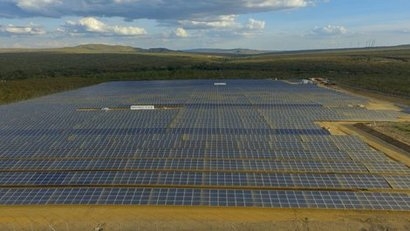
GPM is providing monitoring, control and asset management solutions for the plants with a total solar PV capacity of 8.3 GW, expected to reach 9 GW by the end of the year. According to DNV GL’s Energy Transition Outlook 2017, Solar PV is expected to become a major contributor to the energy supply of the future and play a significant role in decreasing the world’s carbon footprint. By 2050, PV will provide around a third of the world’s electricity representing an increase of 85 times compared to 2015.
Each plant is over 100 MW in scale, representing a total of 1.7 GW across the globe. Just one of the plants can produce enough electricity to power 30,000 homes and eliminate 469,650 tons of carbon emissions per year. The projects are located in the US, Canada, Mexico, the Caribbean, Chile, Europe, Dubai and Brazil and collectively they represent the global growth of solar expected in the future.
DNV GL’s Energy Transition Outlook emphasises the need to accelerate greater and earlier adoption of renewables, especially solar. A key enabler identified in the report is the importance of data analysis to optimise the performance of solar, wind, and utility grids and usage. For PV plant monitoring and control, this means advanced analytics that enable precise, real-time management at the plant and portfolio level with an ability to scale.
“Monitoring and managing plants of this scale requires advanced solar controls and analytic capabilities” said Juan Carlos Arevalo. “GreenPowerMonitor is delivering this enhanced reliability and efficiency for solar generation today. Combined with DNV GL, we provide solutions and a level of service that is unmatched in the industry and ideal for accelerating the growth of solar PV.”
Ditlev Engel, CEO of DNV GL Energy, added that the most pronounced characteristic of the energy transition is the growth of renewable sources including solar. The second megatrend is electrification, which is part of the strategic decarbonisation shift. Solar is already the lowest cost, lowest carbon option in many markets and DNV GL expects this trend to not only continue but also to accelerate. The growth for PV will be driven by continuing cost reductions and performance improvements for PV, including efficiency improvements, manufacturing continuing to scale and the system development process becoming more streamlined.
The GPM solutions used to manage these very large plants includes GPM SCADA, a supervisory control and data acquisition system built for in-plant control of devices, communication with elements, and an immediate assessment of plant status. This provides real-time intelligence of plant status with less than one second latency, supervision and plant operation alarms, in-plant preventive and corrective maintenance support tools, and dashboards for easy visualisation of data and communication with all monitoring devices. Combining this in-plant control solution with GPM Plus, a central portfolio management solution, provides a full end to end solution needed to manage an individual PV plant and total portfolio.
DNV GL shared highlights from its Energy Transition Outlook report during SPI 2017.
Image: A 254 MW solar plant in Brazil
For additional information:

